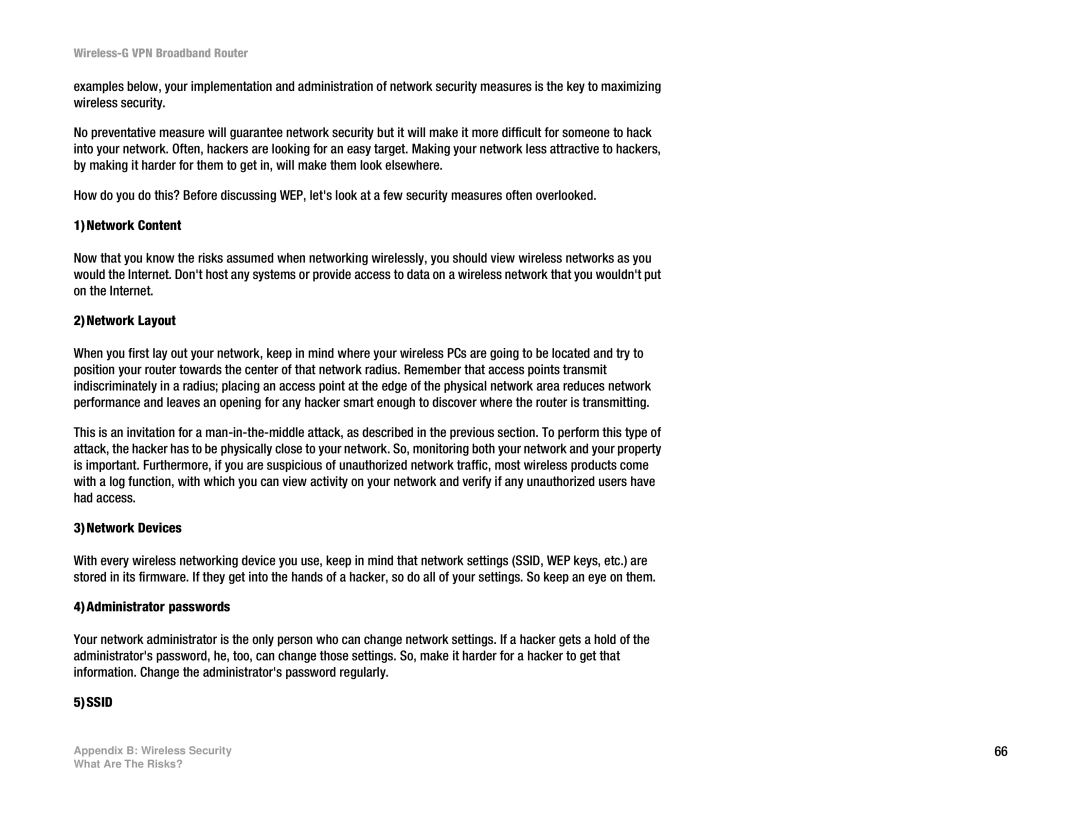Wireless-G VPN Broadband Router
examples below, your implementation and administration of network security measures is the key to maximizing wireless security.
No preventative measure will guarantee network security but it will make it more difficult for someone to hack into your network. Often, hackers are looking for an easy target. Making your network less attractive to hackers, by making it harder for them to get in, will make them look elsewhere.
How do you do this? Before discussing WEP, let's look at a few security measures often overlooked.
1)Network Content
Now that you know the risks assumed when networking wirelessly, you should view wireless networks as you would the Internet. Don't host any systems or provide access to data on a wireless network that you wouldn't put on the Internet.
2)Network Layout
When you first lay out your network, keep in mind where your wireless PCs are going to be located and try to position your router towards the center of that network radius. Remember that access points transmit indiscriminately in a radius; placing an access point at the edge of the physical network area reduces network performance and leaves an opening for any hacker smart enough to discover where the router is transmitting.
This is an invitation for a
3)Network Devices
With every wireless networking device you use, keep in mind that network settings (SSID, WEP keys, etc.) are stored in its firmware. If they get into the hands of a hacker, so do all of your settings. So keep an eye on them.
4)Administrator passwords
Your network administrator is the only person who can change network settings. If a hacker gets a hold of the administrator's password, he, too, can change those settings. So, make it harder for a hacker to get that information. Change the administrator's password regularly.
5)SSID
Appendix B: Wireless Security | 66 |
What Are The Risks?
